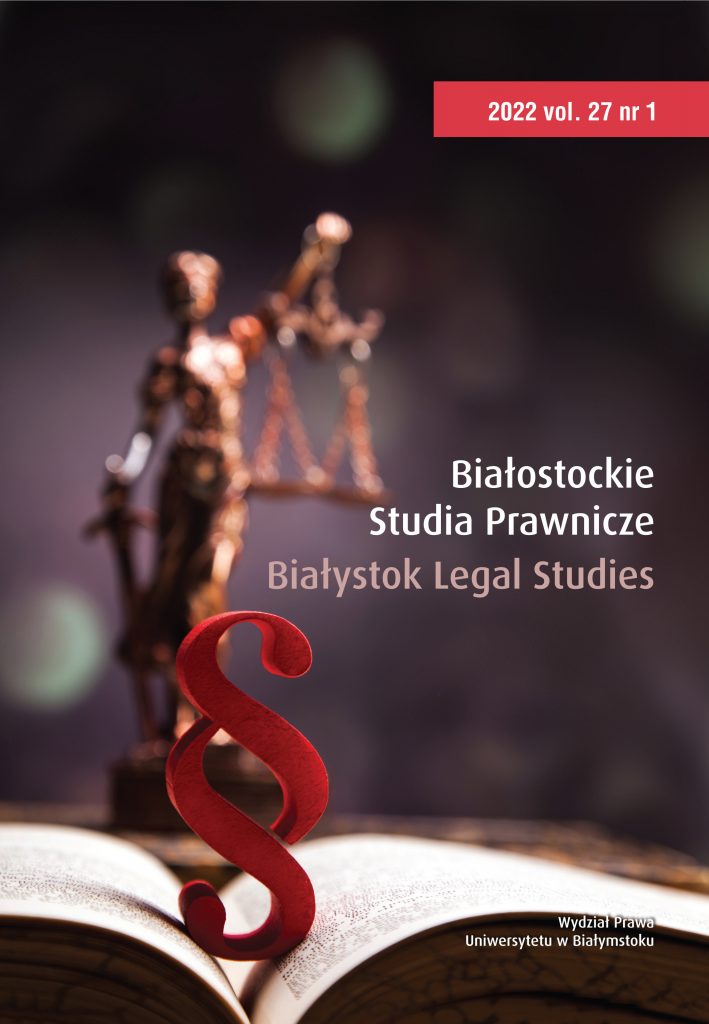Dilemmas of Trademark Protection and the Need for the Participation of Persons with Disabilities in Social and Economic Life
Słowa kluczowe:
average consumer, people with disabilities, tactile trademark, trademark, trademark in BrailleAbstrakt
This article answers the question of whether trademark regulations and case law promote the aims of international and EU law regarding the inclusion of persons with disabilities in social and economic life, which includes the involvement of persons with disabilities as consumers of goods and services, or whether they generate a conflict between the principles of trademark protection and the accessibility of trademarks for persons with disabilities. Trademark law and its interpretation is developing in parallel with the development of the concept of access and the inclusion of people with disabilities in every sphere of life. Both the content of the legislation and, in particular, trademark decisions fail to take into account the disability perspective, thus the law perpetuates an approach that denies people with disabilities the possibility to be consumers and to distinguish the origin of products to the same extent as non-disabled people. It is possible to introduce changes through minor steps in order not to revolutionise but only to complement the trademark system with a disability perspective, and thus meet the requirements of including people with disabilities in social and economic life.Bibliografia
Davis J., Revisiting the average consumer: an uncertain presence in European trade mark law, „Intellectual Property Quarterly” 2015, nr 1.
Domań ska M., People with Disabilities as a Vulnerable Group. The Concept of Protection of the Rights of Vulnerable Groups, „Białostockie Studia Prawnicze” 2018, nr 4.10.15290/bsp.2018.23.04.02
Eskytė I., Disabled People’s Vulnerability in the European Single Market: The Case of Consumer Information, „Journal of Consumer Policy” 2019, nr 42.10.1007/s10603-019-09422-3
Johnson E.E., Intellectual Property’s Need for a Disability Perspective, „George Mason University Civil Rights Law Journal (CRLJ)” 2010, nr 2.
Menzel Baker S., Holland J., Kaufman-Scarborough C., How consumers with disabilities perceive “welcome” in retail servicescapes: A critical incident study, „Journal of Services Marketing” 2007, nr 3.10.1108/08876040710746525
Mik C., Karta Praw Podstawowych: wyznaczniki standardów ochronnych, (w:) J. Barcz (red.), Ochrona praw podstawowych Unii Europejskiej, Warszawa 2008.
Monitoring the Convention on the Rights of Persons with Disabilities, Guidance for human Rights Monitors, Professional training, series nr 17.
Nowińska E., Promińska U., du Vall M. (red.), Prawo własności przemysłowej. Przepisy i omówienie, LexisNexis 2005.
Priestley M., In search of European disability policy: Between national and global, „ALTER” 2007, nr 1.10.1016/j.alter.2007.08.006
Szarfenberg R., Cele gospodarcze jako cele społeczne, http://rszarf.ips.uw.edu.pl/pdf/forumPPS8.pdf.
Ziółkowski M., Wymóg graficznej przedstawialności jako przesłanka zdolności ochronnej znaku towarowego w prawie unijnym – aktualne koncepcje oraz planowane zmiany, „Białostockie Studia Prawnicze” 2015, nr 19.10.15290/bsp.2015.19.17



